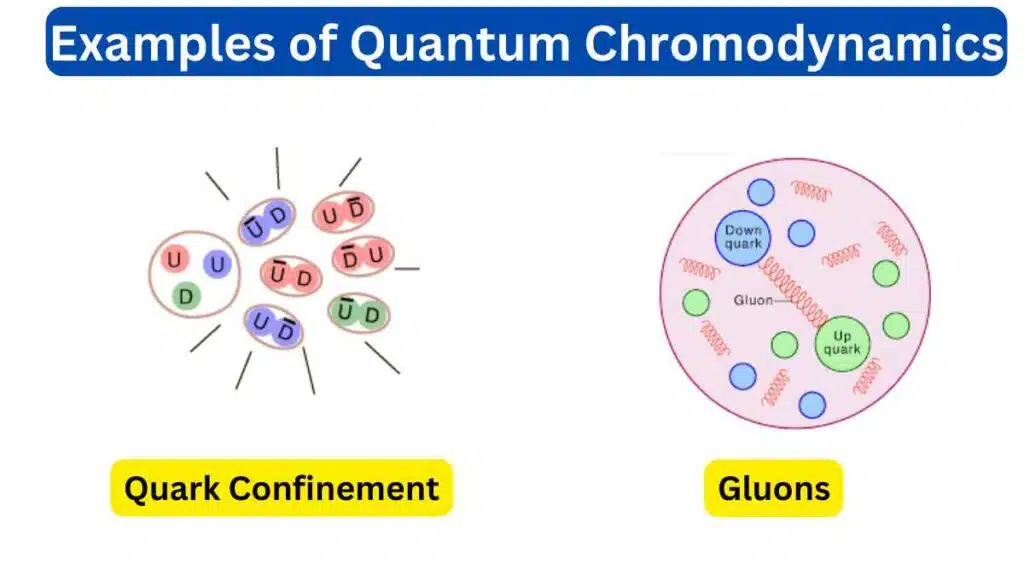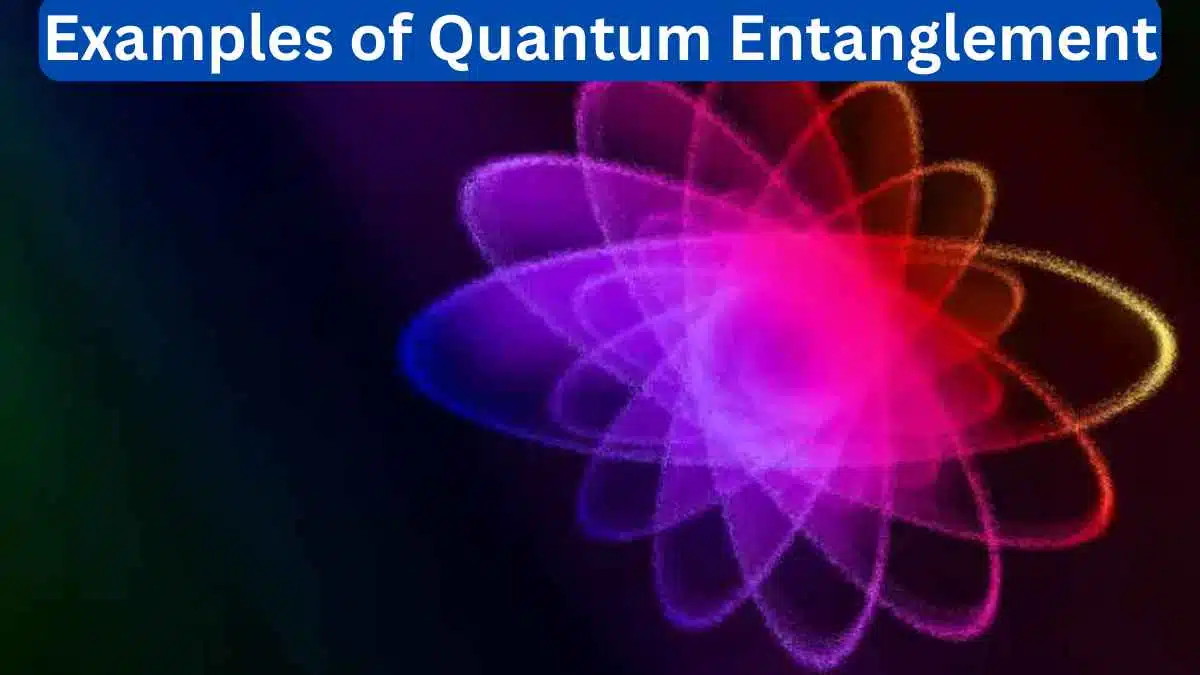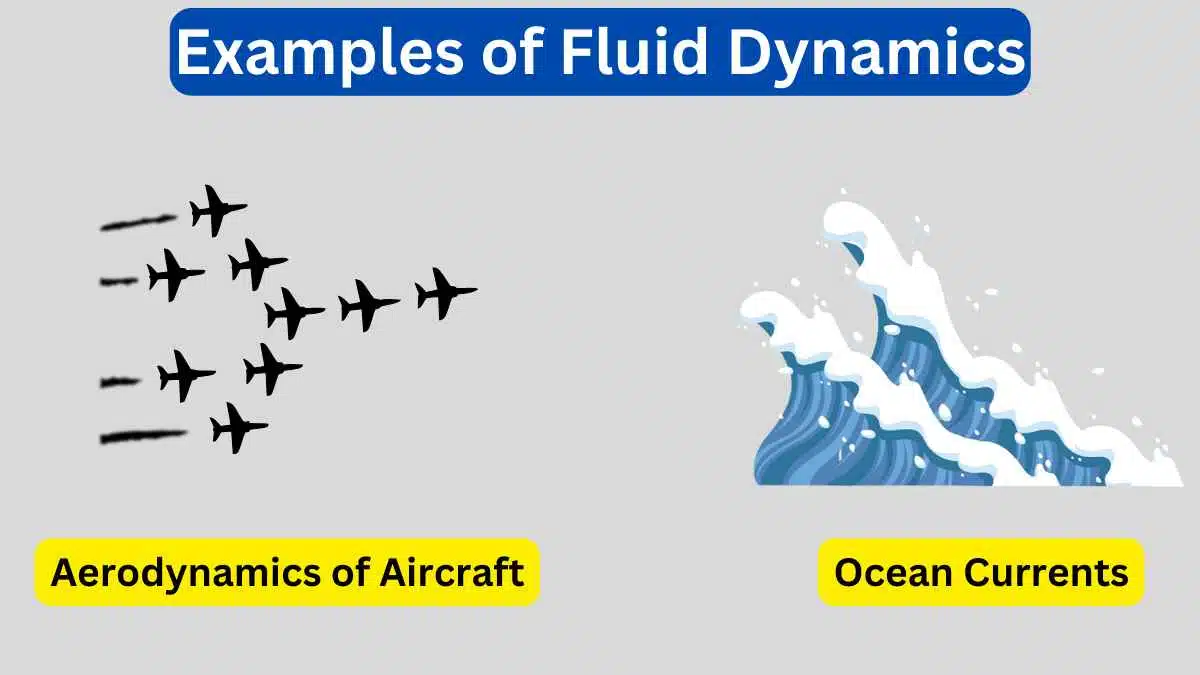10 Examples of Quantum Chromodynamics
Quantum Chromodynamics (QCD) is a fundamental theory in particle physics that describes the strong nuclear force, which holds quarks together inside protons and neutrons, and nucleons together inside atomic nuclei.
Examples of QCD include the discovery of the Omega-minus baryon, the observation of glueballs, and the measurement of hadronic light-by-light scattering.
Examples of Quantum Chromodynamics
Here are ten examples of Quantum Chromodynamics.

1. Quark Confinement
One of the fundamental aspects of QCD is quark confinement, which explains why isolated quarks are never observed in nature. Quarks are always found bound together within hadrons, such as mesons and baryons.
2. Gluons
Gluons are the force carriers of the strong nuclear force in QCD. They mediate the interactions between quarks and carry the “color charge.” Gluons play a central role in understanding the dynamics of quark-gluon interactions.
3. Asymptotic Freedom
QCD predicts a phenomenon known as asymptotic freedom, which means that at very short distances or high energies, quarks and gluons behave almost like free particles. This property has been confirmed experimentally.
4. Hadron Structure
QCD provides insights into the internal structure of hadrons, such as protons and neutrons. It explains how quarks and gluons are distributed within these particles and their properties, like spin and flavor.
5. Strong Force Dynamics
QCD describes the complex dynamics of the strong nuclear force, including the exchange of gluons between quarks and the formation of bound states. This theory allows for precise calculations of hadronic processes.
6. Parton Distribution Functions
Parton distribution functions are essential in QCD and describe the probability distributions of quarks and gluons within protons and other hadrons. They are crucial for understanding high-energy scattering processes.
7. Jet Formation in Colliders
In high-energy particle physics experiments, like those conducted at the Large Hadron Collider (LHC), QCD explains the formation of jets of particles resulting from the fragmentation of quarks and gluons after collisions.
8. Lattice QCD
Lattice QCD is a numerical approach to solving QCD equations on a discrete lattice. It is used to calculate properties of hadrons, such as their masses and interactions, from first principles.
9. QCD in Astrophysics
QCD plays a role in understanding the behavior of matter in extreme conditions, such as the formation of quark-gluon plasma shortly after the Big Bang or in the cores of neutron stars.
10. Strong Force in Nuclear Physics
In nuclear physics, QCD helps explain the behavior of atomic nuclei and their interactions. It is essential for understanding phenomena like nuclear binding energies and the structure of heavy nuclei.
Quantum Chromodynamics is a foundational theory in the Standard Model of particle physics, providing a comprehensive description of the strong nuclear force and the behavior of quarks and gluons. It has been instrumental in understanding the structure and properties of hadrons, as well as guiding high-energy physics experiments and astrophysical observations.






Leave a Reply